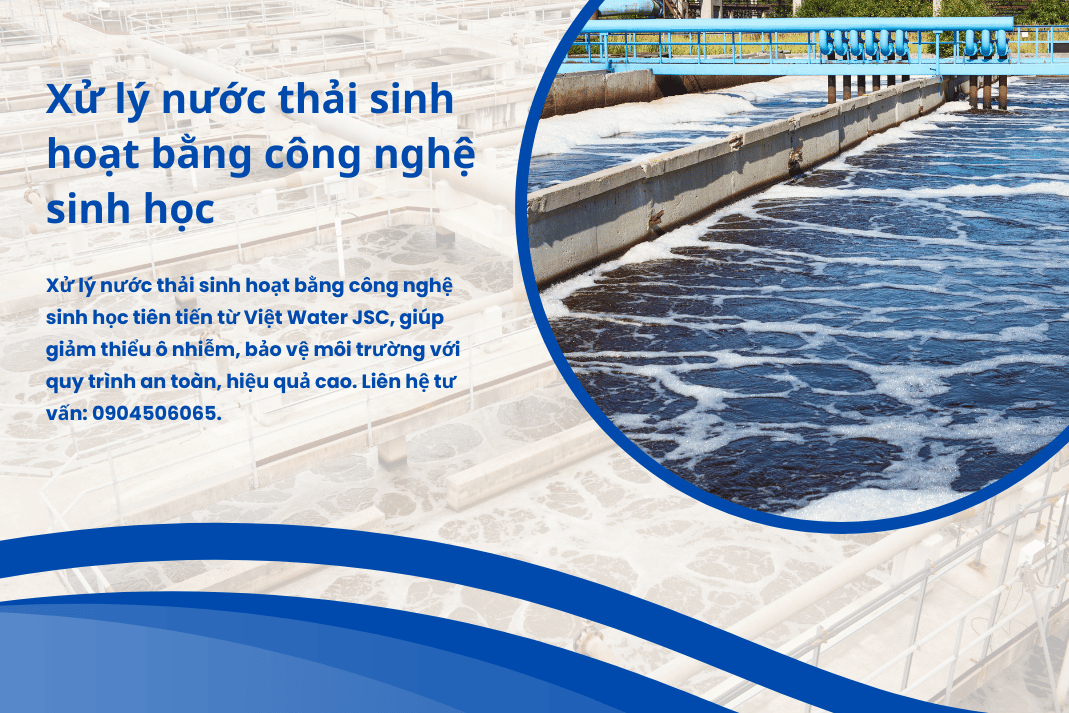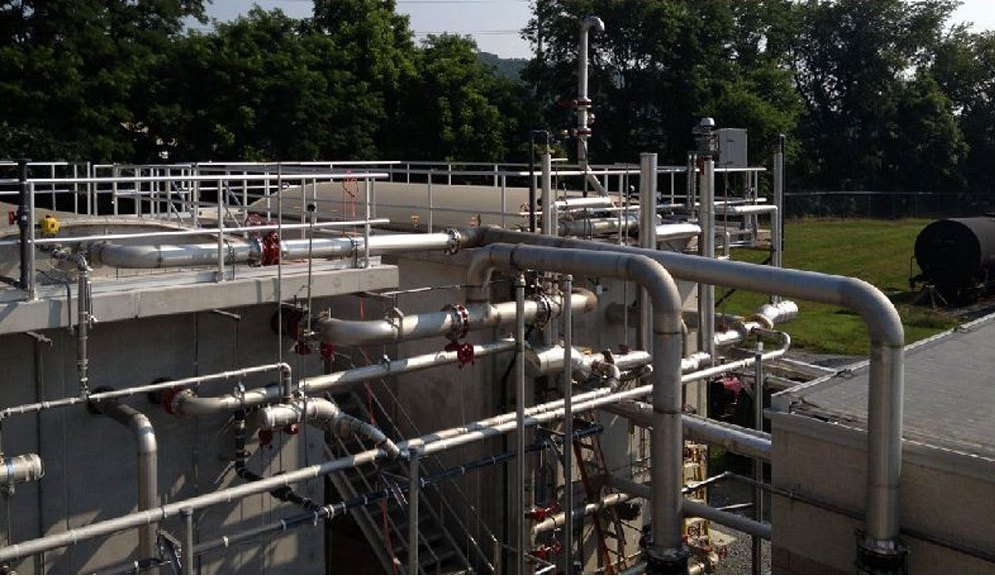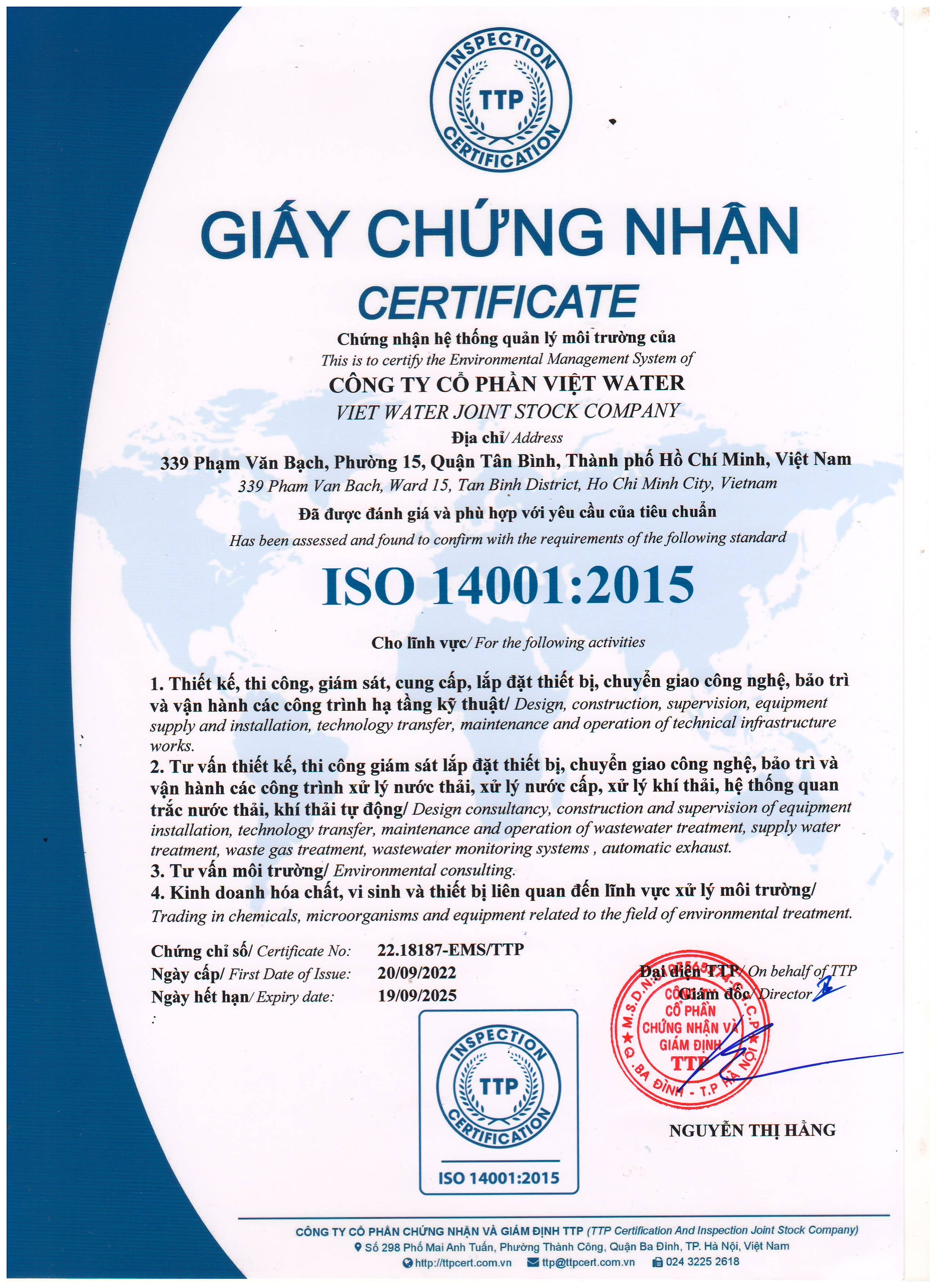Functional Food Production Wastewater Treatment
14 Nov, 2025VIET WATER provides complete wastewater treatment solutions for functional food manufacturing plants...
Treating domestic wastewater is becoming increasingly important in the context of urban and industrial development. Biological technology is a modern and sustainable solution for wastewater treatment, helping to minimize the negative impact on the environment and protect water resources. In this article, we will introduce biological wastewater treatment methods, the microorganisms involved in this process, and the benefits and various approaches of biological technology in wastewater treatment.

Biological technology is a widely applied method for treating domestic wastewater. This method uses natural microorganisms to break down organic substances and pollutants in wastewater. Microorganisms such as bacteria, fungi, and protozoa have the ability to absorb and transform pollutants into less harmful compounds, thereby purifying the water. Biological wastewater treatment is not only environmentally friendly but also helps save costs for businesses and residential areas.
Microorganisms play a crucial role in domestic wastewater treatment. However, to ensure their effective operation, certain conditions must be met:
Maintaining optimal conditions for microorganisms ensures efficient wastewater treatment, reducing operational and maintenance costs of the system.
Biological wastewater treatment involves using microorganisms to remove pollutants. This method is mainly divided into two types: aerobic treatment and anaerobic treatment.

Aerobic treatment uses microorganisms in an environment with oxygen. In this process, microorganisms break down organic matter in wastewater, converting it into CO₂ and water. This method is often applied in large wastewater treatment plants or residential areas, effectively removing organic substances and reducing odors.
In contrast to aerobic treatment, anaerobic treatment occurs in an environment without oxygen. During this process, microorganisms convert organic matter into compounds such as methane and carbon dioxide. Anaerobic treatment is often used in industrial wastewater treatment plants or rural areas due to its low operational costs and the ability to reuse methane as an energy source.
The biological wastewater treatment process generally includes the following main stages:
Pre-treatment: This stage involves removing large solids and impurities from the wastewater to protect the microbial system from harmful substances.
Biological Treatment: This is the main stage of the process, including aerobic and anaerobic methods. Microorganisms in the system will absorb and break down organic substances in the wastewater.
Sedimentation and Disinfection: After biological treatment, the wastewater is directed to a sedimentation system to remove remaining microorganisms and sludge. Finally, the water is disinfected to eliminate pathogens before being discharged into the environment.
Discharge: After treatment, the water meets quality standards and can be released into the environment or reused for other purposes such as irrigation and environmental sanitation.
The anaerobic method involves microorganisms breaking down organic substances in the absence of oxygen, producing gases like methane. The process includes three main stages: hydrolysis, acidogenesis, and methanogenesis.
The anaerobic method is commonly applied in industrial wastewater treatment plants where there is a high concentration of organic matter and a need for methane reuse as an energy source.
Aerobic treatment uses microorganisms that require oxygen to decompose organic matter in wastewater. These microorganisms utilize the organic matter as an energy source, resulting in the production of CO₂ and water as final products.
The aerobic treatment process includes:
Biological wastewater treatment offers several benefits over traditional methods:
If you are looking for an effective and environmentally friendly solution for domestic wastewater treatment, biological technology is the optimal choice. With a team of experienced experts and modern equipment, VIET WATER JOINT STOCK COMPANY is committed to providing efficient biological wastewater treatment solutions that reduce operational costs and ensure high-quality treated water.

Contact us for detailed consultation on a suitable biological wastewater treatment system tailored to the needs and scale of your business:
We are always ready to support and accompany our clients in protecting the environment and achieving sustainable development.